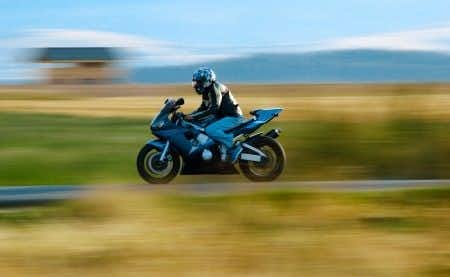The subject crash occurred when plaintiff’s motorcycle struck the right front passenger door of a car in the state of Oregon. The motorcycle had been travelling north, and the car was travelling south and was turning left from the left turn lane.
Plaintiff suffered serious injuries. He alleges in a lawsuit against the municipality that the sight distance approaching the intersection was insufficient and caused the crash.
Question(s) For Expert Witness
1. Was the sight distance adequate?
2. Should the plaintiff have had time to stop?
Expert Witness Response
I performed an inspection of the collision scene involving photographs and measurements. A driver, stopped, facing southbound, can be expected to observe a northbound vehicle, traveling in the second lane, approximately 300 feet away. Plaintiff, assuming that he is utilizing the roadway with due care, would be expected to be traveling no higher than 40 mph, the posted speed limit. If he is traveling 40 mph, and he requires 1.5 seconds to perceive and react, and then applies rapid braking (-0.7 g's) to his motorcycle, then he could bring his motorcycle to a stop within 165 feet. He should be traveling at 35 mph, the northbound advisory speed limit. If he is traveling 35 mph, and he requires 1.5 seconds to perceive and react, and then applies rapid braking (-0.7 g's) to his motorcycle, then he could bring his motorcycle to a stop within 135 feet.
Because the required stopping distance from 35 mph (advisory speed limit) or 40 mph (posted speed limit) is significantly less than the available sight distance, it is improbable that plaintiff was out of sight of the left turning vehicle and then emerged to her turning in front of him. Had he emerged from the curving roadway and was faced with an already left tuning vehicle, plaintiff would have easily brought his motorcycle to a controlled stop well before the collision.
Plaintiff’s first documented braking tire mark was approximately 58 feet before impact. Assuming he was attentive to the operation of his motorcycle and attentive to roadway conditions, he would be expected to have no greater than a 1.5 second perception and reaction time prior to the initiation of braking. 1.5 seconds at 35 mph (advisory speed limit) is 77 feet. 1.5 seconds at 40 mph (posted speed limit) is 88 feet. Therefore, plaintiff initiated his perception and reaction to the left-turning vehicle when he was 135 feet (58 + 77) to 146 feet (58+88) feet away from impact. Since this distance is significantly less than the available sight distance, if plaintiff is at 35 to 40 mph and is riding attentively, he is not out of sight and beyond the available sight distance when the other driver initiated her left turn. Had he been out of sight at 35 to 40 mph (advisory or posted speed limits) and emerged to her left-turning vehicle, and had plaintiff been riding attentively, he would have initiated braking significantly before the 58-foot position documented in the traffic collision report.
Based on my review of the above-described documents, along with my background, training, and experience, I have formed opinions and conclusions based on the available evidence. I found, to a reasonable degree of scientific certainty, that sight distance is not a factor in the crash, assuming plaintiff was attentive and traveling at a speed consistent with the advisory or posted speed limits.
The expert has been an accident reconstructionist for nearly 25 years.
About the author
Kristin Casler
Kristin Casler is a seasoned legal writer and journalist with an extensive background in litigation news coverage. For 17 years, she served as the editor for LexisNexis Mealey’s litigation news monitor, a role that positioned her at the forefront of reporting on pivotal legal developments. Her expertise includes covering cases related to the Supreme Court's expert admissibility ruling in Daubert v. Merrell Dow Pharmaceuticals Inc., a critical area in both civil and criminal litigation concerning the challenges of 'junk science' testimony.
Kristin's work primarily involves reporting on a diverse range of legal subjects, with particular emphasis on cases in asbestos litigation, insurance, personal injury, antitrust, mortgage lending, and testimony issues in conviction cases. Her contributions as a journalist have been instrumental in providing in-depth, informed analysis on the evolving landscape of these complex legal areas. Her ability to dissect and communicate intricate legal proceedings and rulings makes her a valuable resource in the legal journalism field.



